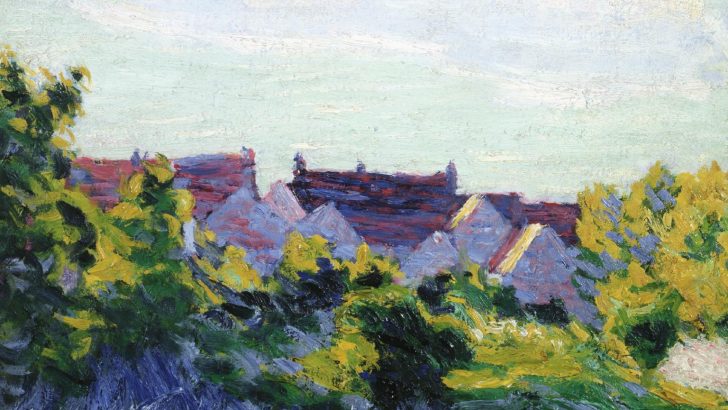Roderic O’Connor and the Moderns: Between Paris and Pont-Aven
exhibition at the National Gallery of Ireland curated by Jonathan Benington with Brendan Rooney, 18 July-28 October.
Catalogue price €19.95.
Today the small town of Pont-Aven in Brittany is a busy tourist centre, a place living off its artistic past. Here in the last decade of the 19th Century and the first of the 20th modern art took a new forms, under the influenced largely of Vincent van Gogh and Gauguin Among the artists there and influence by these two theorists of painting was Roderic O’Connor, an émigré artist born in Roscommon, and educated at Ampleforth.
The new exhibition which opened this week at the National Gallery of Ireland provides insights into just how Pont Aven and what he experienced there influenced the development of O’Connor’s art. It is a fascinating show in many ways.
Brittany with its vital Celtic culture and colourful religious life fascinated some of these painters notably Gauguin, as his painting Jacob Wrestling with the Angel shows. But O’Connor had little or no interest in the Brittany of Renan and Le Braz. His focus was on the landscape and the individual Breton peasant.
The present exhibition shows his pictures in a context of his circle of friends who stimulated the creation of some of his finest paintings. The best things to be seen are a series of peasant paintings which are of themselves documents of Breton life, but also illuminate the continuing evolution of O’Connor’s art.
The landscapes themselves show the same continuous evolution, but one of the best things here is a painting done in Provence where O’Connor later moved to. It shows the blackcurrant coloured mountain at Cassis with a vivid forescape in contrast, a lovely composition.
Yet a painting of the sea and rocks, all vide orange and blue, is hung side by side with a canvas of the church in Chailly-en-biere (Isle-de-France) in 1932, which is flat, the colours muted, an image drained of emotion. A photograph of O’Connor taken in 1935 shows a worn out, exhausted man, a face filled with melancholy.
He lived later in Paris. But in this show there is only one painting, a night scene showing a corner of the Boulevard Raspail, a dark blue composition almost gothic in its sinister appeal, an image of the Paris profonde that few tourists see and many artists left unexplored. The catalogue evokes Van Gogh’s Café Terrace, but that is off the mark. This is a reflection of a mind that was losing itself in its own loneliness.
The last picture of the Breton period is from 1910. But the painter died in 1940. Those later years, in Paris and in the Pays-de-Loire, seem to have been a less than vital period compared with the extraordinary vivid and exciting work of the Brittany years, centred on the art colony at Pont-Aven. The show is a wonderful introduction to the role of Brittany in modern art and to the work of one of Ireland’s finest, if enigmatic, painters of the modern movement.
A fuller account of the painter can be found in Roderic O’Conor: a biography with a catalogue of his works, by Jonathan Benington (Irish Academic Press, Dublin, 1992).


 Peter Costello
Peter Costello Red Roofs c.1894 by Roderic O'Conor 1860-1940
Red Roofs c.1894 by Roderic O'Conor 1860-1940 